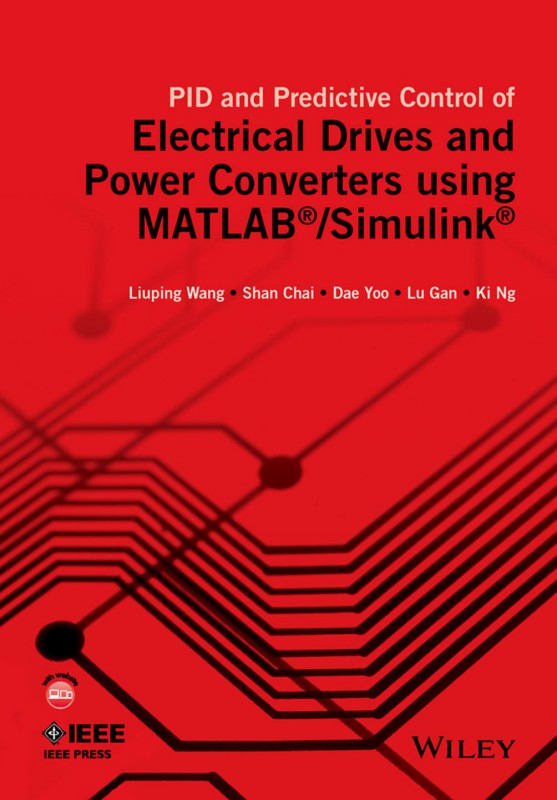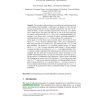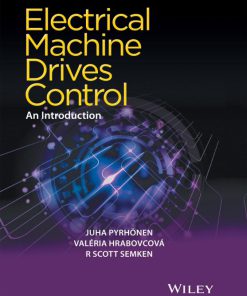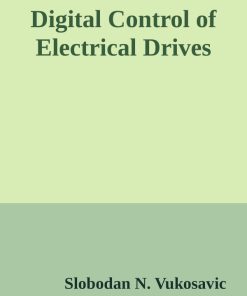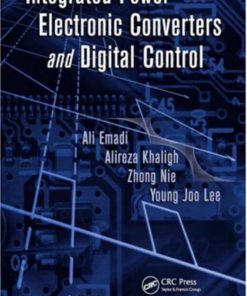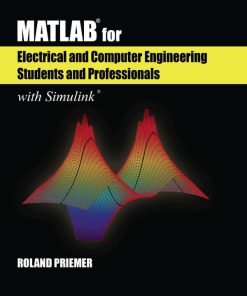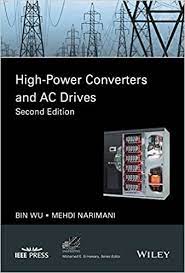PID and Predictive Control of Electrical Drives and Power Converters using MATLAB Simulink 1st Edition by Liuping Wang, Shan Chai, Dae Yoo, Lu Gan, Ki Ng 1118339444 978-1118339442
$50.00 Original price was: $50.00.$25.00Current price is: $25.00.
Authors:Liuping Wang , Series:Electrical Engineering [68] , Tags:Electric motors Electronic control Electric power supplies to apparatus Automatic control Electronic books MATLAB , Author sort:Wang, Liuping , Languages:Languages:eng , Published:Published:Mar 2015 , Publisher:Wiley Blackwell , Comments:Comments:Summary:A timely introduction to current research on PID and predictive control by one of the leading authors on the subject PID and Predictive Control of Electric Drives and Power Supplies using MATLAB/Simulink examines the classical control system strategies, such as PID control, feed-forward control and cascade control, which are widely used in current practice. The authors share their experiences in actual design and implementation of the control systems on laboratory test-beds, taking the reader from the fundamentals through to more sophisticated design and analysis. The book contains sectiShow less
PID and Predictive Control of Electrical Drives and Power Converters using MATLAB Simulink 1st Edition by Liuping Wang, Shan Chai, Dae Yoo, Lu Gan, Ki Ng – Ebook PDF Instant Download/Delivery. 1118339444, 978-1118339442
Full download PID and Predictive Control of Electrical Drives and Power Converters using MATLAB Simulink 1st Edition after payment
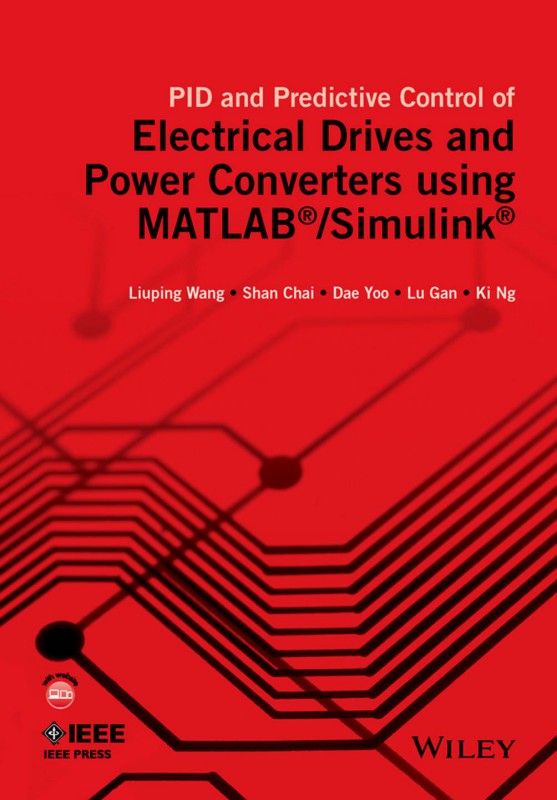
Product details:
ISBN 10: 1118339444
ISBN 13: 978-1118339442
Author: Liuping Wang, Shan Chai, Dae Yoo, Lu Gan, Ki Ng
PID and Predictive Control of Electric Drives and Power Supplies using MATLAB/Simulink examines the classical control system strategies, such as PID control, feed-forward control and cascade control, which are widely used in current practice. The authors share their experiences in actual design and implementation of the control systems on laboratory test-beds, taking the reader from the fundamentals through to more sophisticated design and analysis. The book contains sections on closed-loop performance analysis in both frequency domain and time domain, presented to help the designer in selection of controller parameters and validation of the control system. Continuous-time model predictive control systems are designed for the drives and power supplies, and operational constraints are imposed in the design. Discrete-time model predictive control systems are designed based on the discretization of the physical models, which will appeal to readers who are more familiar with sampled-data control system. Soft sensors and observers will be discussed for low cost implementation. Resonant control of the electric drives and power supply will be discussed to deal with the problems of bias in sensors and unbalanced three phase AC currents.
- Brings together both classical control systems and predictive control systems in a logical style from introductory through to advanced levels
- Demonstrates how simulation and experimental results are used to support theoretical analysis and the proposed design algorithms
- MATLAB and Simulink tutorials are given in each chapter to show the readers how to take the theory to applications.
- Includes MATLAB and Simulink software using xPC Target for teaching purposes
- A companion website is available
Researchers and industrial engineers; and graduate students on electrical engineering courses will find this a valuable resource.
PID and Predictive Control of Electrical Drives and Power Converters using MATLAB Simulink 1st Table of contents:
1. Modeling of AC Drives and Power Converters
1.1 Space Phasor Representation
1.1.1 Space Vector for Magnetic Motive Force
1.1.2 Space Vector Representation of Voltage Equation
1.2 Model of Surface Mounted PMSM
1.2.1 Representation in Stationary Reference Frame
1.2.2 Representation in Synchronous Reference Frame
1.2.3 Electromagnetic Torque
1.3 Model of Interior Magnets PMSM
1.3.1 Complete Model of PMSM
1.4 Per Unit Model and PMSM Parameters
1.4.1 Per Unit Model and Physical Parameters
1.4.2 Experimental Validation of PMSM Model
1.5 Modeling of Induction Motor
1.5.1 Space Vector Representation of Voltage Equation
1.5.2 Representation in Stationary Reference Frame
1.5.3 Representation in Reference Frame
1.5.4 Electromagnetic Torque
1.5.5 Model Parameters and Validation
1.6 Modeling of Power Converter
1.6.1 Space Vector Representation
1.6.2 Representation in Reference Frame
1.6.3 Energy Balance Equation
1.7 Summary
1.8 Further Reading
References
2. Control of Semiconductor Switches via PWM Technologies
2.1 Topology of IGBT Inverter
2.2 Six-step Operating Mode
2.3 Carrier-Based PWM
2.3.1 Sinusoidal PWM
2.3.2 Zero-sequence Injection
2.4 Space Vector PWM
2.5 Simulation Study of PWM Effects
2.6 Summary
2.7 Further Reading
References
3. PID Control System Design for Electrical Drives and Power Converters
3.1 Overview of PID Systems Using Pole-assignment Techniques
3.1.1 PI Controller Design
3.1.2 Desired Closed-loop Performance
3.1.3 Overshoot in Reference Response
3.1.4 PID Controller Design
3.1.5 Cascade PID Systems
3.2 PID Control of PMSM
3.2.1 Sensor Measurements and Feedback Signals
3.2.2 Control Signals to PMSM Inputs
3.3 PI Controller Design for Torque Control
3.3.1 Current Control Loops
3.3.2 Decoupling Current Control
3.3.3 PI Current Controller Design
3.4 Velocity Control of PMSM
3.4.1 Inner-loop Proportional Control
3.4.2 Cascade Feedback Velocity Control (P + PI)
3.4.3 Simulation Examples
3.5 PID Design for Position Control of PMSM
3.6 PID Control of Induction Motors
3.7 PID Design for Power Converter Control
3.8 Summary
3.9 Further Reading
References
4. PID Control System Implementation
4.1 Current Controller Implementation
4.1.1 Voltage Operational Limits
4.1.2 Controller Discretization
4.1.3 Anti-windup Mechanisms
4.2 Implementation for PMSM, Induction Motors, and Power Converters
4.3 Outer-loop PI Control System Implementation
4.4 MATLAB Tutorials
4.5 Summary
4.6 Further Reading
References
5. Tuning PID Control Systems with Experimental Validation
5.1 Sensitivity Functions in Feedback Systems
5.2 Tuning Current-loop Controllers for PMSM
5.3 Outer-loop Controller Robustness
5.4 Analysis of Time-delay Effects
5.5 Tuning Cascade PI Systems for Induction Motors
5.6 Summary
5.7 Further Reading
References
6. FCS Predictive Control in d–q Reference Frame
6.1 States of IGBT Inverter and Constraints
6.2 FCS Predictive Control for PMSM
6.3 MATLAB Implementation of FCS-MPC
6.4 Analysis of FCS-MPC Systems
6.5 FCS-MPC with Integral Action
6.6 Summary
6.7 Further Reading
References
7. FCS Predictive Control in Reference Frame
7.1 Predictive Current Control for PMSM
7.2 Resonant FCS Predictive Current Control
7.3 Resonant FCS Control for Induction Motors and Power Converters
7.4 Summary
7.5 Further Reading
References
8. Discrete-time Model Predictive Control (DMPC)
8.1 Linear Discrete-time Model for PMSM
8.2 MPC Design with Constraints
8.3 Experimental Evaluation of DMPC
8.4 Summary
8.5 Further Reading
References
9. Continuous-time Model Predictive Control (CMPC)
9.1 CMPC Design and Nonlinear Constraints
9.2 Simulation and Experimental Evaluations
9.3 Gain Scheduled Predictive Controllers
9.4 Summary
9.5 Further Reading
References
10. MATLAB/Simulink Tutorials on Physical Modeling
10.1 Building Embedded Functions (Park-Clarke Transformation)
10.2 Simulation Models for PMSM, Induction Motors, and Power Converters
10.3 Experimental Setups and Test-bed Configurations
10.4 Summary
10.5 Further Reading
People also search for PID and Predictive Control of Electrical Drives and Power Converters using MATLAB Simulink 1st:
speed control of dc motor using pid
what are the methods of speed control of dc motors
voltage pid
understanding pid control part 5
You may also like…
eBook PDF
Transition and Opportunity 1st edition by Huiyao Wang, Lu Miao ISBN 981168605X 978-9811686054

